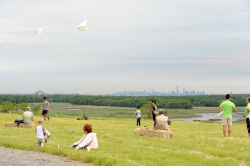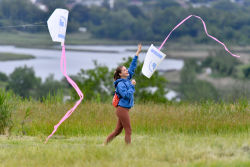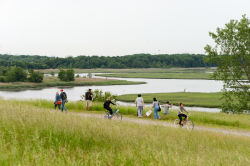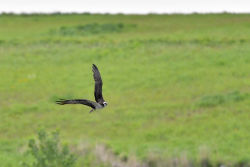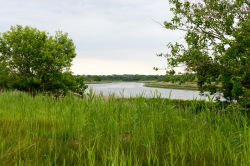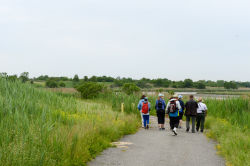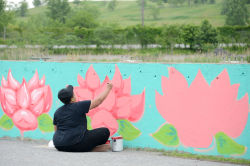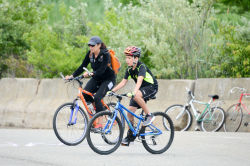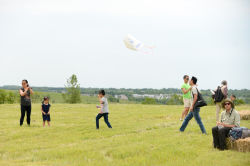Freshkills Park
The Daily Plant : Tuesday, March 29, 2011
Parks, Sanitation And Friends Celebrate The 10th Anniversary Of The Fresh Kills Landfill Closure
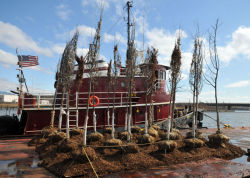
Photo by Daniel Avila
Last Tuesday, Parks Commissioner Adrian Benepe, Sanitation Commissioner John Doherty, Staten Island Borough President James Molinaro, Council Members Vincent Ignizio and Deborah Rose, Director of the Mayor’s Office for Long-Term Planning & Sustainability David Bragdon, representatives from partner City agencies and organizations, and members of the Staten Island community celebrated the 10th anniversary of the closure of the Fresh Kills Landfill by welcoming a barge of trees and planting them at the future location of the Freshkills Park South Park area.
Fifty-three years of landfill operations came to an end on the morning of March 22, 2001. New York City Department of Sanitation scow No. 123 departed the North Shore Marine Transfer Station in Flushing, Queens, with 600 tons of garbage, the last delivery of waste to the Fresh Kills Landfill. Crowds along the waterfront celebrated the last barge and the arrival of the day when New York City’s residential waste would no longer be deposited on the west shore of Staten Island.
The 2,200-acre site has begun the transition from closed landfill to world-class park. Together, Sanitation and Parks oversee the reclamation and redevelopment of this land. Sanitation has worked to cap, monitor and maintain the infrastructure under the planned park, including a system collecting natural gas to heat 22,000 homes on Staten Island. Parks continues design and construction of Freshkills Park, which will have five main areas: the Confluence, North Park, South Park, East Park and West Park.
Construction has begun for Owl Hollow Park and Schmul Park, adjacent sites that will provide access to the greater Freshkills Park site. Owl Hollow Park, a previously undeveloped 21-acre site, will offer four synthetic turf soccer fields (two of which will be lighted) and a LEED certified comfort station complete with green roof, geothermal heating and cooling and a wind turbine that will be able to power the building. A newly-renovated Schmul Park will offer playground, handball and basketball courts, flowering meadow, native grass areas and rain garden.
South Park, the first park development on the landfill area, will focus on providing active recreational opportunities to park visitors while maximizing access to the site's spectacular landscapes and vistas. The 20-acre project features play and picnic areas, scenic overlooks, meadows and lawns for informal games and events, a 1-mile bike loop, a race and game strip, two softball and little league fields and views of a variety of forest, grassland and wetland habitats. A permanent public art installation is being developed for South Park by Department of Sanitation Artist-in-Residence Mierle Laderman Ukeles.
The North Park project is currently in the permitting process and is expected to go out to bid this year. North Park will focus on passive recreation and nature appreciation. This area will include photovoltaic-powered lighting, a path to the waterfront, a picnic area, a bird observation tower, an overlook deck, and a tree nursery and Founder Seed farm operated in partnership with the Parks Department’s Greenbelt Native Plant Center.
While the full build-out will continue in phases for the next 25 years, development over the next several years will focus on providing public access to the interior of the site and showcasing its unusual combination of natural and engineered beauty.
QUOTATION FOR THE DAY
“We've chosen the path to equality; don't let them turn us around.”
Geraldine Ferraro
(1935 – 2011)
Check out your park's Vital Signs
Clean & Safe
Green & Resilient
Empowered & Engaged Users
Share your feedback or learn more about how this park is part of a
Vital Park System

